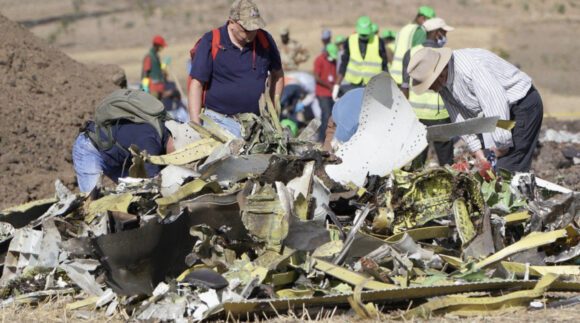
Boeing HQ
Today’s key stories focus on strategic priorities for Boeing, which is now facing increasing financial difficulties. An article in flight global speaks about why timing matters to the big 2 aircraft OEMs for narrow-body replacements, while Jon Ostrower reports that Boeing is pulling engineers away from its future X-66A aircraft to focus on solving the problems and delays that exist with virtually every Boeing program. The bottom line is that Boeing is running out of cash, and may need to tap its new $10 billion line of credit this year.
But the reason Boeing is running out of cash is that it made a similar decision to reduce R&D years ago and redevelop the 737 MAX instead of the NMA. It has an obsolete narrow-body product, and stopping investment is the same strategy that killed Douglas, the source of the financially driven management culture at Boeing. If Dave Calhoun wants to bankrupt the company, he just took the right step to do so. Without a competitive product, number two may become number three behind Embraer, which is considering the feasibility of developing a larger new technology narrow-body aircraft.
The Economist had an interesting podcast talking about what it will take to turn Boeing around, and that’s a laundry list of cultural, product, executive and financial management changes at the company. The re-acquisition of Spirit AeroSystems may be slowed by Airbus, who are naturally unwilling to pay much for operations that supply it but are currently losing money, since nobody wants to invest strongly in inefficient operations that need a turnaround. The bottom line is that Boeing may need to spin off the Airbus units for less than they initially imagined. Airbus is still the only answer as a potential customer, but now it comes down to price.
An editorial piece in the Everett Herald linked Boeing’s titanium problem with outsourcing, as Boeing has lost the internal personnel to properly vet both the materials and paperwork. This looks like a false certification issue, which is more common than we’d like to think about with Chinese-sourced materials. Testing of materials imported from China could be mandated by the FAA if incidents of false documentation continue.
Finally, the new Air Force One program is already late, and now won’t fly until 2026. The program will end up 3 to 4 years late, and is already showing cost overruns of $2 billion plus on a fixed price contract. Boeing is eating the cost overrun on this program, not what it needs when the company is struggling and bleeding cash due to slow deliveries of its key products.
Links to today’s key stories follow:
- Tufecki: Boeing titanium problem shows risks of outsourcing – Everett Herald
- Why timing matters as big two airframers mull future narrowbody strategies – Flight Global
- How Spirit AeroSystems is caught between Boeing and Airbus tactics – Benzinga
- What will it take to turn Boeing around? – The Economist
- Boeing is shifting engineers away from X-66A development – The Air Current
- The new Air Force One won’t fly until 2026 – three years after… – Business Insider
Views: 2




